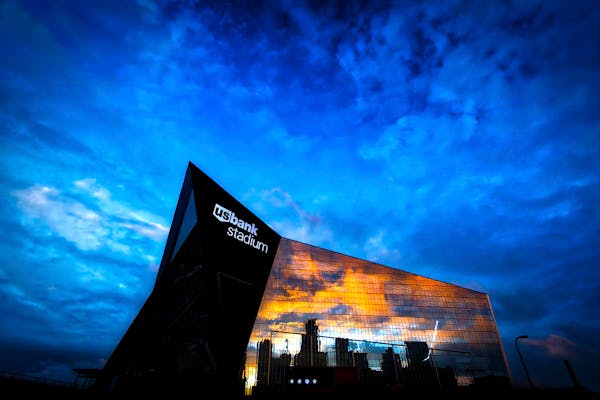When I moved to Minnesota in 1990 to cover the Vikings, Minneapolis offered a mediocre downtown living and entertainment experience and a rat-infested, prematurely anachronistic sports stadium named, awkwardly, the Metrodome.
Thursday, I toured U.S. Bank Stadium for the first time.
What follows is not a journalistic accounting of the arena, or stadium politics or economics, but the personal view of a longtime football writer who loves living in Minneapolis, appreciates quality sporting architecture and can see U.S. Bank Stadium from his patio.
The place is spectacular.
It also fits my personal financial philosophy: If you're going to spend a billion dollars, make sure you get yourself something nice.
In many ways, the NFL's financial success has long outrun its infrastructure. The most popular sport in America plays its games in a lot of bad, or mediocre, or outdated, or unimaginative stadia. MetLife Stadium in New Jersey cost $1.6 billion and isn't as plush as high school stadia in the west suburbs, or anywhere in Texas.
The Twin Cities began a sweeping upgrade of sports stadia with Xcel Energy Center, and has continued with TCF Bank Stadium, Target Field and CHS Field. There might not be another place in the world with so many beautiful arenas located so closely together, not with the addition of U.S. Bank Stadium.
Few football stadiums are beautiful. Few are innovative. It's difficult to break the pattern of sameness when every football stadium is an oval seating area surrounding a uniformly rectangular field. Baseball can add odd dimensions or nooks to any outfield. In football you are not allowed to add a berm or Green Monster to the end zone.
So setting a football stadium apart is difficult. The Vikings and HKS Architects have succeeded. The West Bank (my first attempt at a nickname) is unique and striking. It will be instantly identifiable when NFL cameras offer overhead shots. Inside, it is state of the art and flooded with natural light.
And while the Metrodome failed to spruce up the portion of Minneapolis abutting the Mill District, U.S. Bank Stadium is already succeeding. The Commons offers a green space few American downtowns can rival, and the buildings around the Commons are either architecturally impressive or under construction.
In the past 25 years, downtown Minneapolis has added a remarkable number of excellent restaurants, coffee shops and bars. It is one of America's most walkable cities, and now a sports fan living in the city can walk to Target Field, Target Center and U.S. Bank Stadium without breaking a sweat, and can reach TCF Bank Stadium, CHS Field and Xcel Energy Center via light rail.
Visitors from warmer climes will probably be shocked by the cold when they arrive for the Super Bowl in 2018. They might also be shocked that Minneapolis has so much to offer.
The Wilfs will benefit greatly from the stadium. The NFL never loses a leveraged negotiation.
If you can't stand public funds being used for stadia, U.S. Bank Stadium probably looks like an abomination, a crime against humanity.
But cities are collections of buildings. Minneapolis has become a great place to live because of buildings that attract people, who attract businesses, which attract world-class restaurants, which attract more people who can support new construction.
There is nothing fair about billionaires or billion-dollar leagues receiving public funding, or applying real or implied threats to move a traditional franchise, but that is the way of the real world.
So, if you're going to build a publicly funded new stadium for a billion dollars in your downtown, you might as well build something spectacular.
U.S. Bank Stadium might be the best venue in the NFL, and it makes the Metrodome by comparison seem like an old, frequently-stomped mushroom.
Jim Souhan's podcast can be heard at MalePatternPodcasts.com. On Twitter: @SouhanStrib. • jsouhan@startribune.com

Souhan: This is KAT's chance to prove Flip Saunders was right

Souhan: Why Tiger Woods should keep swinging
Souhan: Scheffler wins Masters again, shows what makes him special
Morikawa falters in final round at Masters


